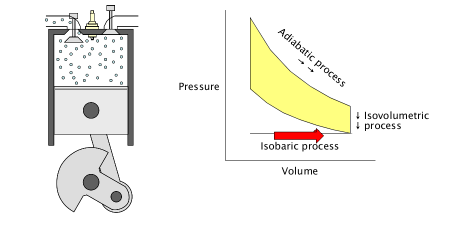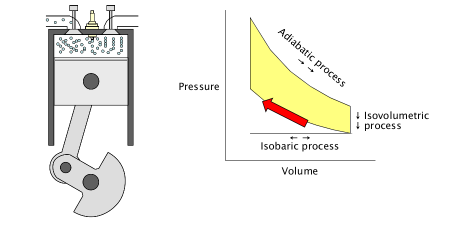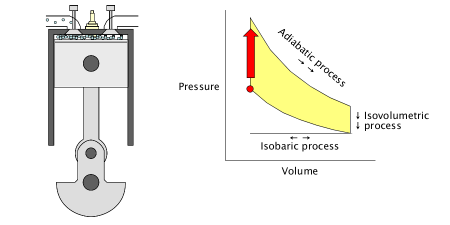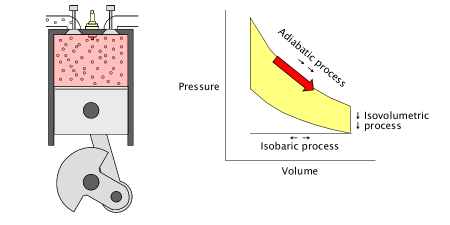Heat engine
A heat engine is a machine that operates by moving energy from a hot space to a cold space. In this process, the heat engine converts some of the heat energy into mechanical energy.
All the heat engines are returned to their original state after a series of processes. During this cycle, the heat engine gives works to the outside.
Otto cycle
The Otto cycle is an ideal thermodynamic cycle that describes the function of a typical spark ignition piston engine. The Otto cycle describes the most common engine that burns gasoline and ignites the spark.
1. Intake stroke
The intake valve opens, and the piston comes down, and the fuel mixed air enters the cylinder. The pressure is unchanged because the valve opens, and the gas enters freely.

2. Compression stroke
As the valve closes and the piston rises, the fuel mixed air is compressed. It is similar to the adiabatic process because it happens at a fast speed. (But it is not the same as the adiabatic process because it does some heat exchange).

When the piston reaches to the top, there is no volume change since the rotational motion property. If the spark plug sparks and ignites the fuel, the pressure increases instantaneously.
3. Ignition phase & Expansion stroke
As the high-temperature gas expands, the piston is pushed out. It is similar to the adiabatic process because it occur at high speed.

When the piston reaches the bottom, there is almost no volume change since the rotary motion property. When the exhaust valve opens, the pressure drops instantaneously.
4. Exhaust stroke
As the piston rises, the exhaust gas is discharged to the outside. The pressure is constant because the valve is open, and the gas escapes freely.

References
Animated Engines http://www.animatedengines.com/